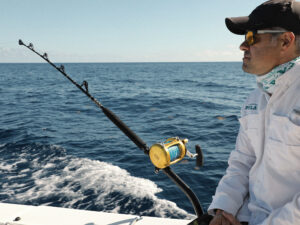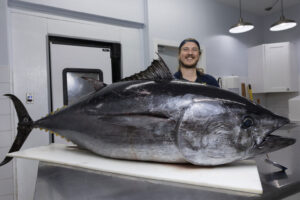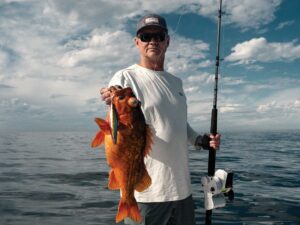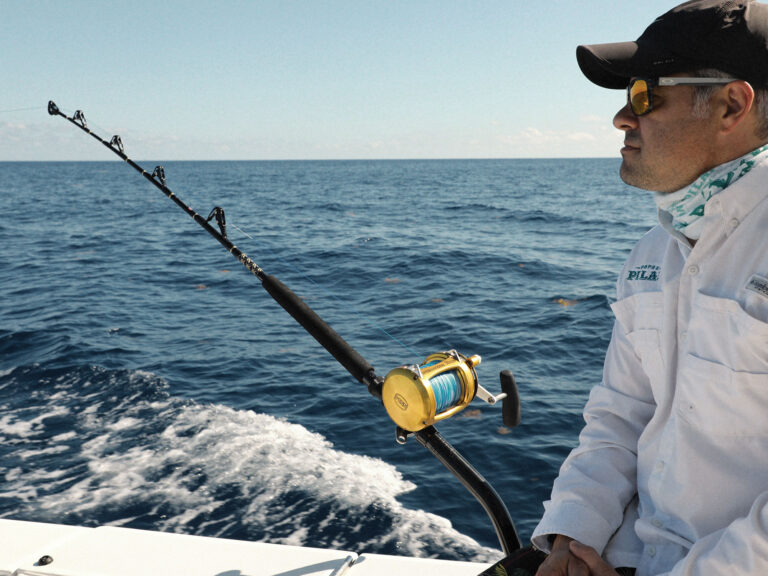
A concept used in marine fishery management known as “best available science” is often invoked when proposing major regulatory changes. It is a common theme from coast to coast to coast. A case in point is occurring now in California. The state’s Department of Fish and Wildlife came forward last year with a proposal to the California Fish and Game Commission to reduce the take of barred sand bass.
This species—Paralabrax nebulifer—represents a fairly unique case study. With a range that stretches along the Pacific Coast from Southern California to northern Baja California, barred sand bass have long enjoyed gamefish status. That means they are off-limits to commercial fishing in the waters off California, and so the only harvest impact in state and federal waters is from recreational fishermen. It’s within this context that the California DFW has drawn much of its data and recommendations.
In a final presentation to the commission in December 2024, DFW scientist Armand Barilotti offered up evidence that the population is declining based on data of sport-caught landings of barred sand bass over the past several years.
Barilotti placed particular emphasis on the catch rates during the June-to-August time frame each year. Great numbers of barred sand bass often gather to spawn over mudflats in depths ranging from 60 to 120 feet. In years past, anglers aboard private and party boats have cashed in on the bonanza, resulting in great concentrations of boats fishing flats areas along the coast.
In recent years, however, recreational catch rates of barred sand bass during this spawning season have dropped. This data—the DFW’s best available science—led to Barilotti’s conclusion that the population of barred sand bass is in decline.
Based on this report, the commission is considering a major reduction in the take of barred sand bass. Comments at the December meeting from commission president Samantha Murray and commissioners Eric Sklar and Erika Zavaleta point to enactment on April 1, 2025, of draconian measures, including zero take of barred sand bass from June 1 to August 31, and a reduction in the daily bag limit (currently five fish) during the rest of the year.
Herein lies the danger in leaning on best available science. In this case, catch rates of barred sand bass alone are not sufficient to support such drastic measures. It is certainly a factor to consider, but there exist so many other factors that using only catch rates is tantamount to the proverbial blind man trying to describe an elephant.
So, what is the DFW’s report missing? For one, much angling effort has shifted over the past several summers to SoCal’s outstanding offshore fishing for species such as bluefin tuna, yellowfin tuna, mahi and California yellowtail.
“From 2019 to 2023, our boats did not fish for barred sand bass in summer because our customers wanted to fish for pelagics,” says Donna Kalez, COO of Dana Wharf Sportfishing and Whale Watching. “It was only in 2024 that we started fishing for barred sand bass again, and that’s because offshore fishing was not so great last summer.”
Yet another factor harkens back to 2013 when, based on the same concerns, the commission cut the daily bag limit by 50 percent (from 10 to five) for barred sand bass and increased the minimum size to 14 inches (from 12 inches). It substantially reduced the number of barred sand bass anglers could retain, so of course catch rates have declined for the past 12 years.
Read Next: Recreational Fishing as a Catalyst for Conservation
Also missing is a recent stock assessment for sand bass. The last one took place in 2012. “How do you know the true abundance of barred sand bass until you have a current stock assessment of the biomass?” asks Wayne Kotow, former executive director and current board member of the Coastal Conservation Association of California. “You can’t determine a maximum sustainable yield until you know how many fish there are.”
Finally, the report fails to acknowledge the migratory nature of barred sand bass populations. Science has shown that barred sand bass spawning off Southern California in summer do not live there year-round. They have migrated up the coast from Mexico. But depending on conditions—like the right water temperature, clarity and forage—they don’t always need to travel this far north to procreate.
As with many natural phenomena, these migration patterns are cyclical. If barred sand bass populations find the right conditions in Mexico, they will stay there to spawn, perhaps for many summers in a row. When the best available science fails to include such factors—no matter what coast or species is in question—it can lead to an illusion of decline and, ultimately, misguided regulatory changes.









